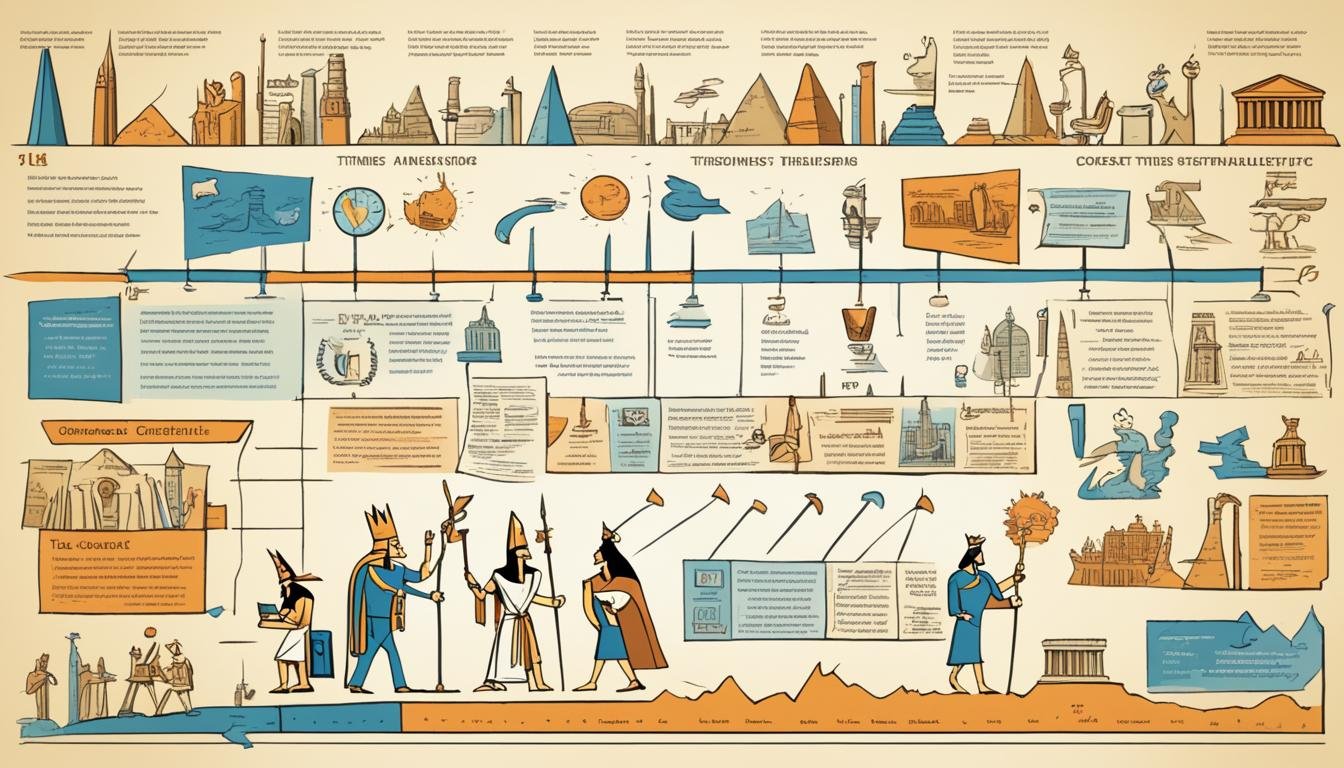Lessons from History: How Business Theories Evolved
In today’s fast-paced world, it’s easy to think that modern business came from recent discoveries. But, the story of business theories and management goes way back. It shows how economic, social, and political forces have always mixed together. What can the past teach us about the future of business?
The history of business is full of interesting stories. From ancient trade systems to today’s advanced management theories, it’s a fascinating journey. This article will look at the historical roots of business theories. We’ll see the big thinkers and key concepts that shaped today’s business world.
By looking at the ups and downs of management ideas, we learn about the business world’s strength and flexibility. This can help us understand what the future might hold.
If you’re looking to start a business, already run one, or just want to know how businesses work, this look into the past is for you. Let’s explore business history together. We’ll find out what lessons from the past can teach us for a brighter future.
The Origins of Business: Trade, Barter, and Currency
The early days of business saw the rise of vast trade networks, like the Silk Road. This road connected big ancient places like China and the Roman Empire. These networks often used barter, swapping goods or services without money.
Barter helped people exchange resources but had a big problem. It didn’t have a standard way to measure value. This made it hard to set fair prices and grow global trade.
Early Trade and Barter Systems
The Silk Road and other early networks showed the need for better exchange systems. Barter was used but struggled with no standard value. It relied too much on trust and having what the other person wanted.
This made growing a strong business world hard.
The Emergence of Currency
To fix barter’s issues, early societies started using currency. Moving from bartering to money made trading easier and fairer. It helped international trade grow and made sure sellers got paid well for their goods.
Currency led to new ideas like debt, credit, and banking. These ideas were key for the economic growth of the Middle Ages and later times.
“The introduction of currency led to the development of concepts like debt, credit, bills of exchange, and early banking institutions, which were crucial for the economic progress of the Middle Ages.”
The Medieval Era: Guilds and Mercantilism
In the Middle Ages, medieval guilds were key to Europe’s economy. They were made up of merchant and craft guilds. These groups helped merchants and artisans work together, set production standards, and lessen competition.
Guild Systems and Craftsmanship
The medieval guild system was all about community and helping each other out. Merchant guilds gave traders a strong voice in politics. Craft guilds made sure products were made the same way everywhere, keeping quality high. This led to a strong middle class of merchants before mercantilism took over.
Then, mercantilism came along. It believed trade could make a country rich by controlling it with strict rules and high taxes on imports. Governments worked hard to make trade work in their favor, using tariffs to do so.
“The medieval guild system was a means through which merchants and craft workers could benefit from mutual aid and establish uniform production standards, reducing economic competition.”
The mix of guilds and mercantilism set the stage for the economic systems of the later Middle Ages and beyond. This period changed trade, money, and brought a strong merchant class to the forefront. It was the start of the Industrial Revolution.
The Industrial Revolution and Birth of Management Theories
In the 18th century, the world saw a big change with the Industrial Revolution. This era brought in machine-driven manufacturing, making things more efficient and productive. The use of steam power, the growth of cities, and new tools were key to this change.
Impact of the Industrial Revolution
With new technology, companies made more products, and people wanted more of them. This meant companies needed more workers, with some factories having thousands. Managers had to find ways to keep these large teams happy and productive, leading to new management theories and concepts.
Birth of Modern Management Theories
During this time, important people in management made big changes. Frederick Winslow Taylor wrote “The Principles of Scientific Management” in 1914, starting the scientific management theory. Henri Fayol and Max Weber also made their mark with administrative management and bureaucratic management theories. These ideas focused on people in business, setting the stage for today’s management.
The Industrial Revolution and new management theories changed business forever. They set the stage for modern management, which guides how companies work today.
Lessons from History: How Business Theories Evolved
The evolution of business theories is a fascinating journey through time. It shows us the many perspectives and key thinkers who have shaped today’s business world. From Frederick Taylor’s groundbreaking work to new theories like Neoclassical Economics and Behavioral Economics, the impact on management has been huge.
Frederick Taylor introduced Scientific Management in the late 19th century, changing how businesses saw their workers and operations. His focus on efficiency and optimizing worker productivity changed everything. This led to big advances in quality control and the growth of fields like operations management.
- Scientific management was big in the 1880s and 1890s in U.S. manufacturing, with Taylor’s “Principles of Scientific Management” published over a hundred years ago.
- Taylor believed in fair pay for fair work and that management and labor should work together to achieve goals.
- At the core of Taylorism were time studies, motion analysis, and optimizing jobs to boost productivity and efficiency.
Later, the neoclassical economic model became very influential, assuming people act only for their own benefit. But, it has been criticized for not matching real life and failing to predict economic trends well.
Now, Behavioral Economics is changing the game, showing how feelings and psychology affect our choices. This shift helps us understand people better and how they influence business.
“The evolution of business theories is a captivating journey through time, revealing the diverse perspectives and influential thinkers that have shaped the modern business landscape.”
Management’s historical view is still growing, with new areas like Evolutionary Thinking and Multi-Level Selection Theory offering fresh insights. By exploring the history of business theories, we can learn a lot about the future of management and the changing business world.
Conclusion
The history of business and management theory teaches us a lot today. It shows how trade and currency started long ago and how the Industrial Revolution changed everything. This journey is full of adaptation and new ideas.
Looking back, we see how business has changed over time. We learn about the thinkers who made big impacts. We also see how being adaptable and focusing on people is key in business today.
This history helps us understand the past and guides us for the future. It gives us insights on how to face new challenges and seize new chances.
Looking to the future, we know that new trends and innovations will shape business. By learning from the past and listening to what society needs, businesses can thrive. They can help make a better and more prosperous future for everyone.
Source Links
- A Guide to Popular Management Theories
- Evolution of leadership theory
- The Evolution of Management Models: A Neo-Schumpeterian Theory
- A Brief History of Business and Business Theory
- The History of Money: Bartering to Banknotes to Bitcoin
- Medieval Life
- Mercantilism
- History of Management Theory | Organizational Behavior and Human Relations
- 3.3 The Industrial Revolution – Principles of Management | OpenStax
- Scientific Management Theory | Introduction to Business
- The Grand Theory Of Business, From Charles Darwin
- History of Business & Evolution of Business | Immerse Education
- The History of Management






